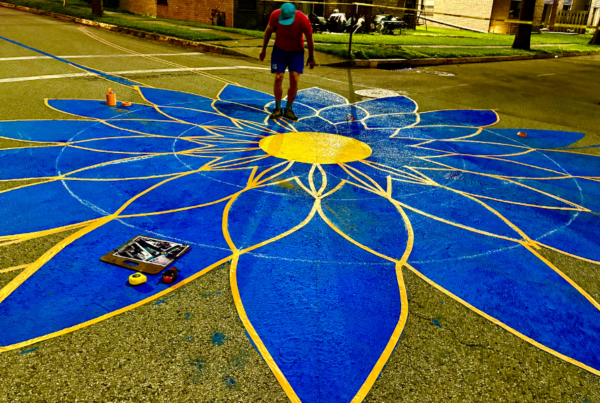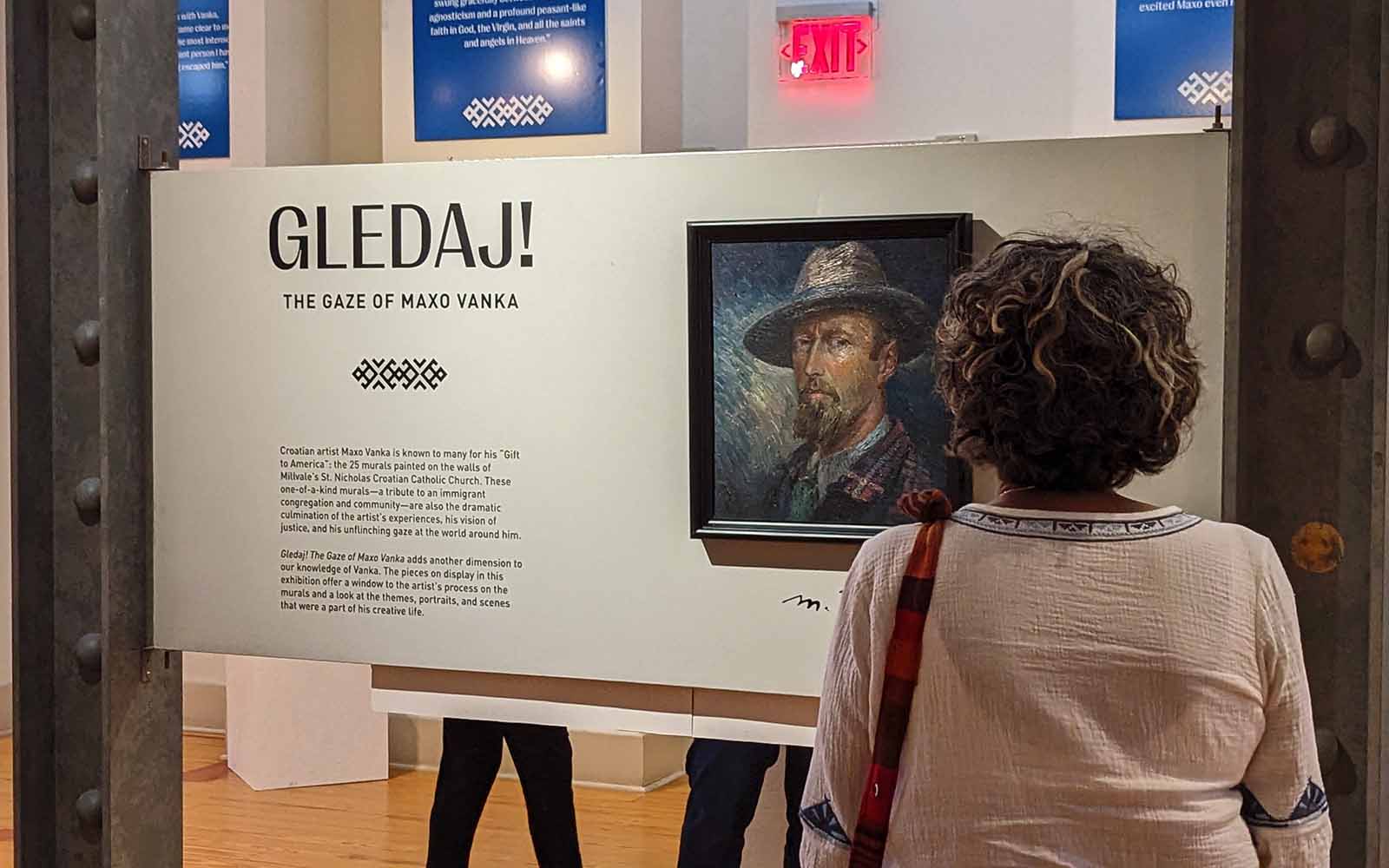
By Gita Michulka, Contributing Writer | Image: The Gledaj! The Gaze of Maxo Vanka exhibition at the Bost Building
Community Spotlight—Gledaj! The Gaze of Maxo Vanka
The Community Spotlight series features the efforts of Rivers of Steel’s partner organizations, along with collaborative partnerships, that reflect the diversity and vibrancy of the communities within the Rivers of Steel National Heritage Area.
By Gita Michulka, Contributing Writer
Gledaj! Looking at Pittsburgh through Maxo Vanka’s Eyes
“His youthful fire, as an observer of social injustice and human brutality, is never extinguished. For most of his artistic career, Maxo mixes together his classical training and highly developed drawing skills with the anger of a reformer and the didactic narrative of a classical painter.” Bruce Katsiff, Former Director, James A. Michener Museum, 2001
When Croatian artist Maxo Vanka visited Pittsburgh in 1935 and again in 1937, he saw a city entrenched in industry, steeped in a laborer’s Depression-era anguish, and budding with marvels that included countless churches and bridges and the recently completed Cathedral of Learning.
His sketches from his travels through the region showcase just how keenly he saw the beauty and the bereavement, observations that shine through in the murals he later created in St. Nicholas Croatian Catholic Church in Millvale.
Thanks in part to funding from Rivers of Steel’s Mini-Grant Program and the LIGHT Education Initiative, longstanding partners Rivers of Steel and the Society to Preserve the Millvale Murals of Maxo Vanka (SPMMMV) have collaborated to showcase an exhibition of works by Maxo Vanka. The gallery exhibit brings together private works on loan from the Vanka family and private collectors, paired with SPMMMV’s The Vanka Collection—a gift of more than 130 drawings, sketches, and preparatory drawings for the murals by Maxo Vanka’s granddaughter, Marya Halderman and her husband John. The exhibition is on display now at the Bost Building in Homestead.
Titled Gledaj! The Gaze of Maxo Vanka—in Croatian “Gledaj!” translates to “Look! See!”—this collection brings to life Maxo Vanka’s passion and purpose. Though his focus while he was in Pittsburgh was on completing a series of twenty-five murals to adorn the interior of the church, he also spent time exploring the region, expanding his observation of the plight of immigrant communities and the laborers of that time.
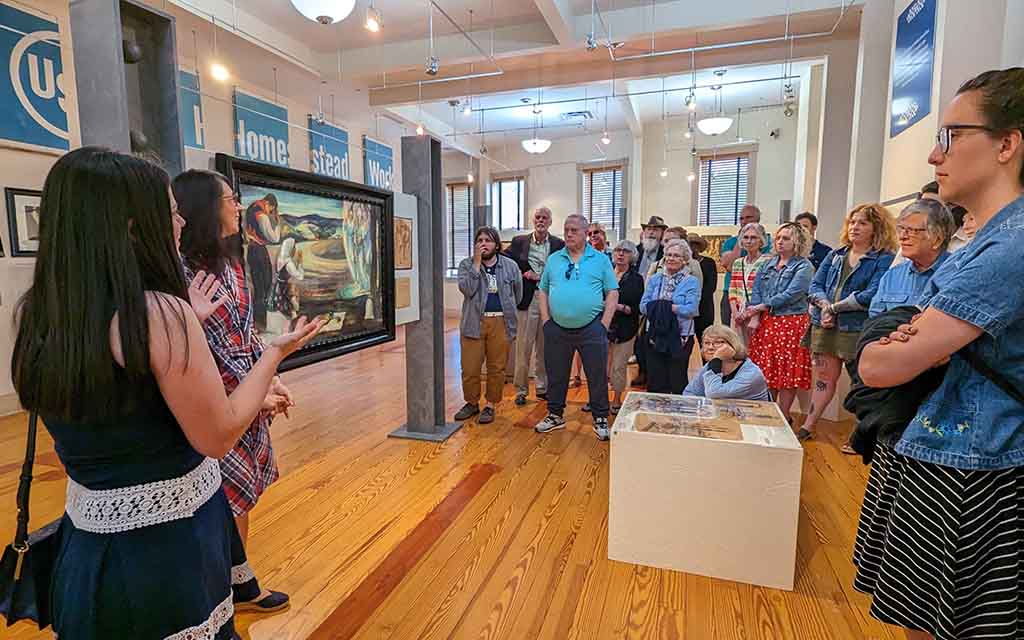
Christie Clayton and Dr. Sylvia Rhor Samaniego lead a group through the exhibition during a gallery talk in May.
“We thought that the Bost Building was an ideal location for Gledaj!, reinforcing the murals’ connection to the region’s history and not just Millvale,” said Anna Doering, executive director of SPMMMV. “Vanka celebrated Pittsburgh’s industrial heritage through his sketches, and they seem at home at Bost. But we also wanted to raise awareness about the Vanka Murals among the Rivers of Steel audiences who might be interested in exploring a related aspect of Pittsburgh’s history.”
“I have always felt that our two sites, The Vanka Murals at the St. Nicholas Croatian Church in Millvale, and the Carrie Furnaces in Swissvale / Rankin, are the two ‘can’t miss’ tourist sites in the region,” agrees Ron Baraff, Rivers of Steel’s director of historic resources and facilities. “The legacy of industry and the ‘culture of steel’ are woven into the fabric of both our stories. The steel industry was the draw factor and economic driver of the region’s growth, while the church and the immigrant experience were central to the social and cultural lives of those who left behind everything they knew to create a new life in this country. Their triumphs and tragedies, and wealth of culture and experience, are central to our themes. Nowhere else can you find such unique and genuine immersive forays into the makeup and vitality of the region.”
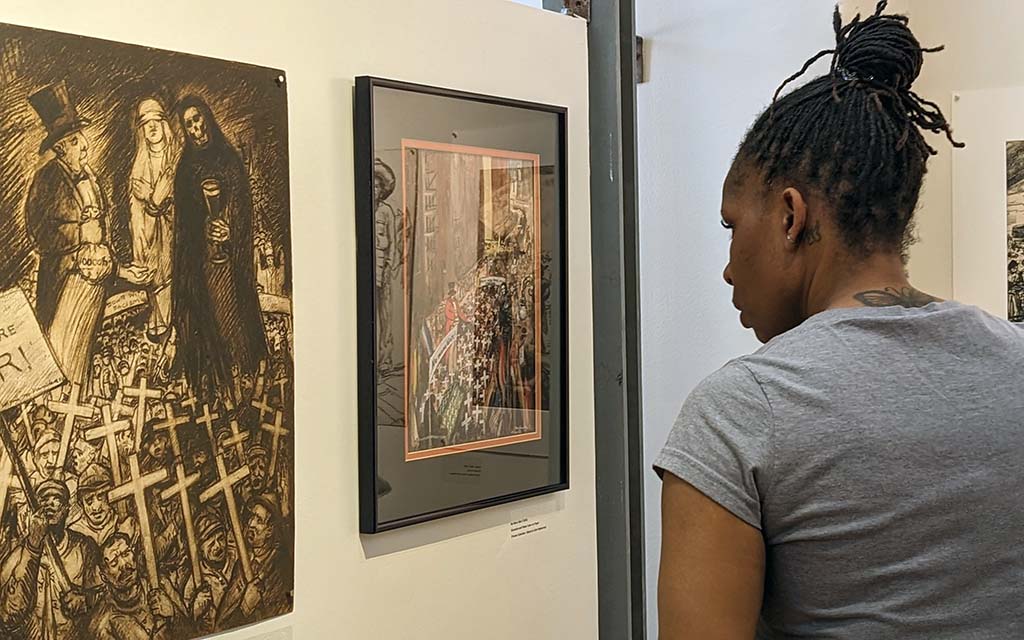
Themes displayed in the Vanka Murals are foreshadowed in earlier artworks by Vanka.
Though not native to Western Pennsylvania or its steel mills and industry, Vanka’s lived experience in Croatia and travels through the established and emerging industrial centers of America in the 1930s had a unifying thread—the plights of the laborer and of the immigrant. His murals are prominent works of art for their style and imagery, but it is the underlying story behind each piece that stands out. The images on display in the Gledaj! collective offers glimpses into the movements and the monuments that struck him—labor disputes, striking workers, cities under the fog of industry. In the series of work from his time in Pittsburgh, viewers see the newly constructed Cathedral of Learning in Oakland, the iconic Immaculate Heart of Mary Church in Polish Hill, views of downtown and the Point, and of course, bridges. His travels also took him to the Johnstown Mill, where he captured the essence of a working steel mill.
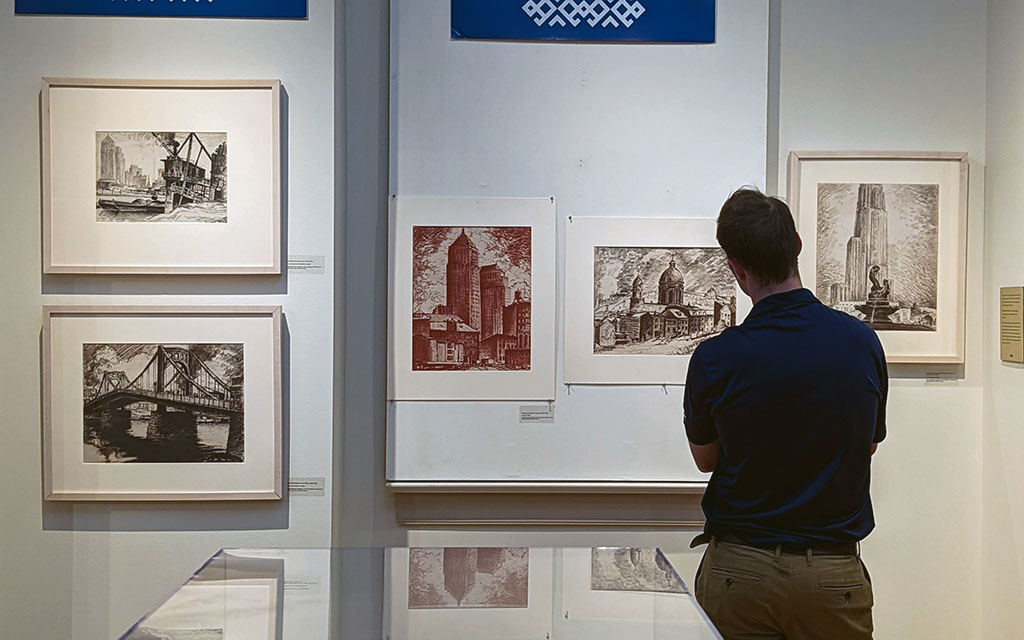
Landmarks like the Cathedral of Learning and bridges captured Maxo Vanka’s gaze.
“We think the exhibit fills in some important areas of knowledge about Vanka and the genesis of the Murals,” continues Doering. “Visitors can appreciate influential highlights in his personal story, artistic training, and many forms of inspiration. It challenges the myth that Vanka was simply inspired to paint these images once he entered St. Nicholas. The availability of loaned items allowed us to tell a more complete story by showing works that were completed before and during his time in Pittsburgh.”
Gledaj! offers viewers a glimpse of the other influential arts movements from the early twentieth century, on display in Vanka’s oil paintings, watercolor portraits, graphite sketches, and sepia studies. But the works themselves, particularly as a collective, showcase a unique and distinctive talent made stronger by his desire to highlight the marginalized immigrants, workers, and Black Americans.
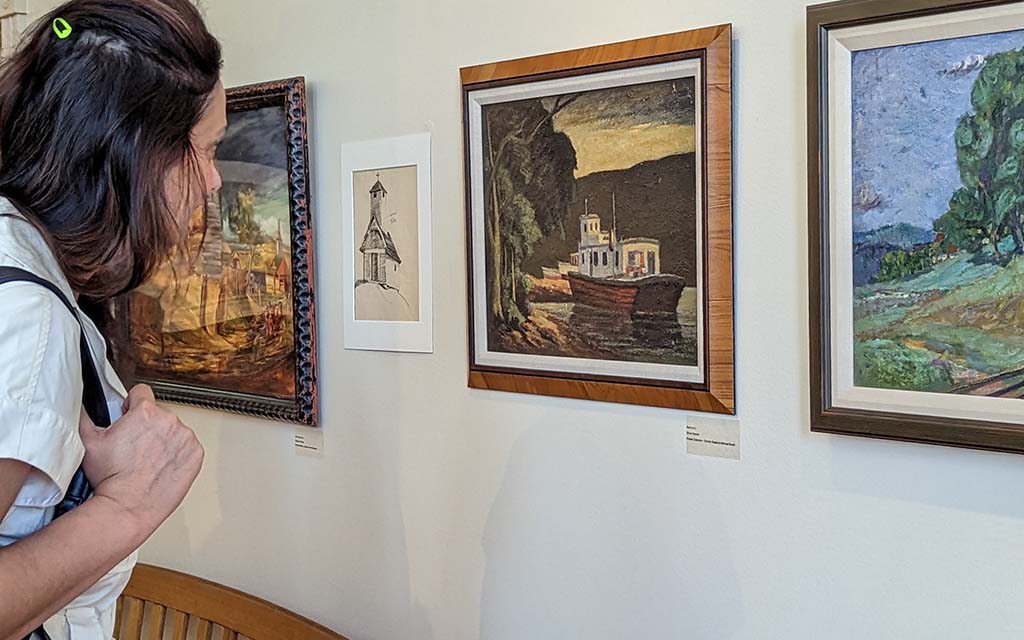
The range of Maxo Vanka’s influences are shown through this collection of artworks.
For exhibit curator Steffi Domike, “Vanka employed all of the tools of his training as a portrait artist, his lifelong practice of figure drawing, and his keen sensitivity to the burdens of poverty to his work at St. Nicholas Church. He is particularly gifted in painting personality and emotion in the bodies of his subjects, as well as in the facial expressions. Vanka’s workers are muscled and strong and express pride, but also fragility, exhaustion, and death. Their joy lies with community, faith, and family.”
“The exhibit reinforces his artistic talent and ability to tell a compelling story through his art. In many ways, it shows that he was uniquely qualified to paint the Murals in St. Nicholas through the circumstance of his birth, lived experiences, talent, and temperament,” notes Doering. “The artist, the murals and the opportunity for the commission in a historic Croatian Church in Millvale, PA, are all truly one of a kind.”
Gledaj! The Gaze of Maxo Vanka will be on display at the Bost Building through August 25, 2023, and is open to the public for a suggested donation of $5 per person. Public tours of the Vanka Murals are offered at the historic St. Nicholas Croatian Catholic Church in Millvale on Saturdays at 11:00 a.m. or 12:30 p.m. and Mondays at 6:30 p.m.
In conjunction with the Gledaj! exhibition, SPMMMV will also be offering expanded community engagement opportunities through the summer, including sketching sessions in the South Side, Carrie Blast Furnaces, and Polish Hill. Inspired by Maxo Vanka’s views of Pittsburgh, sketched in 1935 and 1937, these three-hour outdoor sessions will help participants learn how to use their sketchbooks to observe, experience, and celebrate unique spaces here in Pittsburgh and beyond.
Registration is $20 per person and includes water, snacks, and a gift from the Vanka Murals. Spaces are limited. Participants must bring sketching supplies and portable seating if desired. Sketch with the Vanka Murals! South Side (Sunday, 6/25) with session leader John Martine; Carrie Blast Furnaces (Sunday 8/6) with session leaders Rick Landesberg and Ron Donoughe; and Polish Hill (Sunday 10/1) with session leader Ron Donoughe.
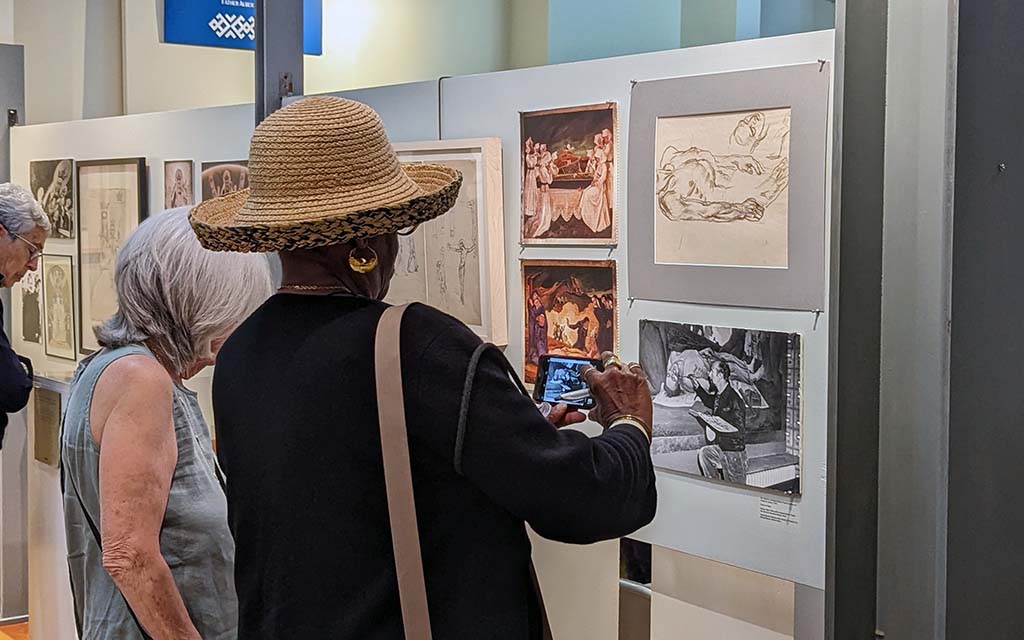
The exhibition includes some photographs of the artist.
Curated by Steffi Domike, Gledaj! is presented in partnership with the Rivers of Steel Heritage Area. Funding was provided in part by a grant from the Pennsylvania Department of Conservation and Natural Resources. Additional support comes from 2023 Paint the Town Maxo Sponsor Dentons Cohen & Grigsby.
About the Mini-Grant Program
Rivers of Steel’s Mini-Grant Program assists heritage-related sites and organizations as well as municipalities within the Rivers of Steel National Heritage Area to develop new and innovative programs, partnerships, exhibits, tours, and other initiatives. Funded projects support heritage tourism, enhance preservation efforts, involve the stewardship of natural resources, encourage outdoor recreation, and include collaborative partnerships. Through these efforts, Rivers of Steel seeks to identify, conserve, promote, and interpret the industrial and cultural heritage that defines southwestern Pennsylvania.
The Rivers of Steel National Heritage Area is one of twelve supported by the Pennsylvania Department of Conservation and Natural Resources (DCNR). Funding is provided via DCNR’s Community Conservation Partnerships Program and the Environmental Stewardship Fund to Rivers of Steel, which administers the Mini-Grant Program.
 Gita Michulka is a Pittsburgh-based marketing and communications consultant with over 15 years of experience promoting our region’s arts, recreation, and nonprofit assets.
Gita Michulka is a Pittsburgh-based marketing and communications consultant with over 15 years of experience promoting our region’s arts, recreation, and nonprofit assets.
If you’d like to know more about community projects supported by the Mini-Grant Program, check out the latest round of awards.

